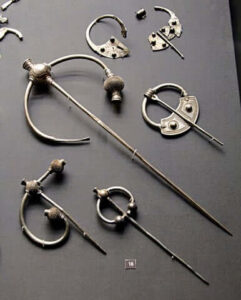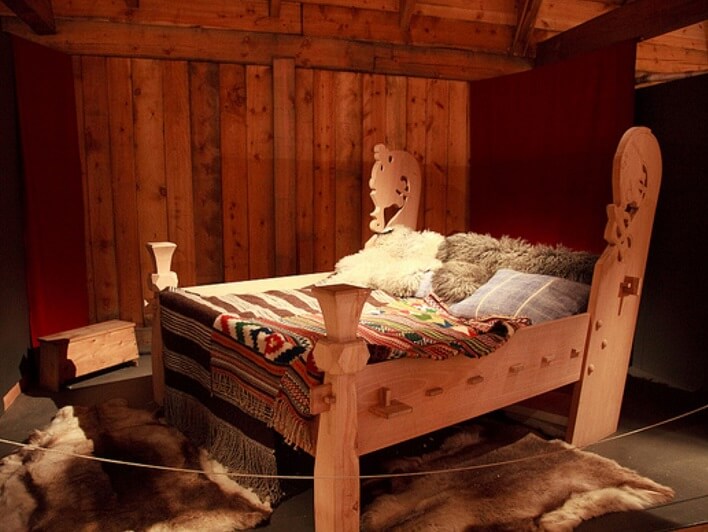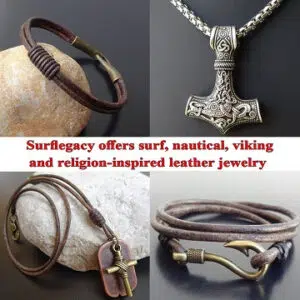Viking society enjoyed greater sexual freedom than in other contemporary contexts. However, this freedom was conditional on fulfilling the social obligation to produce offspring.
Vikings were very proud of their appearance, scent, and level of desirability. Men would strive to bathe at least once a week (which was quite frequent for the time)

Viking’s bath
Men and women both dyed their hair and dressed in clean, bright clothing, jewelry, and cloak pins to show off wealth and style.
They had extramarital affairs, despite the fact that marriage and procreation were still primary goals in their society.
In fact, these two milestones were expected, and those who did not meet them were frequently shunned.

Viking Hair Pins Jewelry

Historcal Viking comb from the 9th century
When, around the year 1000, Christian and Muslim ambassadors visited the ancient Viking chieftains, they must have been astounded to learn of the sexual habits of these people.
Viewed from the outside, the Viking society might have seemed a very permissive society. But there was also a downside: sexual freedom was conditional on men and women fulfilling their obligation to procreate.
Many of the Viking customs regarding sex, such as polygamy or homosexuality, can best be understood when framed within this social obligation.
Marital obligations, individual freedoms
Ambassadors from foreign countries, according to their chronicles, were very surprised by the importance of women’s pleasure in Viking society.
In visitor cultures, female pleasure was seen as something sinful. In contrast, the Vikings believed not only that women had a right to pleasure, but also saw it as a precondition for them to participate in conception with their “contribution.”
The Vikings and Homosexuality
People were not classified as homosexual, bisexual, or straight by the Vikings. The Vikings distinguished between the dominant and submissive roles in sexual relationships.
Manliness was extremely important in Viking society. If a man assumed the dominant role, he could be in a homosexual relationship. Being submissive was humiliating. Raping a man was a degrading and punishing act.
In Viking society, there were only two insults that could lead to murder. The first was to accuse a man of being a coward during a battle. The second was to accuse a man of being an ergi, or being penetrated.
The importance of the partner was crucial: a particular type of magic, that of “love spells,” allowed-or at least this was what the ancient Norse believed-to meet the desired partner.
These types of rituals also prove that homosexuality was accepted in Viking society, as there were different spells depending on the desired combination: a man could desire a male or female partner; conversely, a woman could seek another woman or a man.
That a man or woman had same-sex lovers was not a problem, as long as these did not become a “distraction” from the obligation to procreate
But there was one condition. Same-sex relationships were not to distract from marital obligations: that a man or woman had same-sex lovers was not seen as a problem if these did not become a distraction from the obligation to procreate with one’s spouse.
Then there was a difference between same-sex relationships between women and those between men: while the former were widely accepted, in the latter there was a negative conception of the one who was considered the “passive” partner.
One man’s submission to another was considered a dishonor: if a man accepted a subordinate position in bed, he would do the same in other matters and was therefore seen as a weak person.
Marriages, in short, were always heterosexual because their purpose was to procreate. This task was the responsibility of both sexes, and the inability to beget children-or being sexually incompatible was a legal and sufficient reason to file for divorce, a procedure that could be initiated by either member of the couple.
In a fragment of the saga of Gísla Súrssonar, a story written in the 13th century, a woman decides to divorce her husband and claims that “his penis is so long that he gets no pleasure from me,” which makes it difficult for her to conceive.
Although it is a literary text, it probably reflects an incident that could have happened in reality.
Viking women could divorce their husbands
If a Viking woman was unhappy with her husband, whether sexually or otherwise, she was free to leave him.
However, the Vikings had fairly strict gender roles; a woman would have grounds for divorce if her husband wore women’s clothing or preferred men.
Her dowry and any inheritances she received during the marriage would also be re-gifted to her.
Laws against gender-based violence
Viking society contemplated as well a set of laws that were extremely advanced for the time: those concerning gender violence.
This set of rules codified penalties for different types of behavior considered harassing: from unwanted groping to rape.
The fact that the Vikings felt the need to protect women is closely linked to a key concept in their culture, that of honor.
It must be said, however, that the penalties covered by these laws varied greatly depending on the social status of the victim and the aggressor.
The Vikings had laws against gender-based violence, but the punishment varied depending on the social status of the victim and aggressor
Abusing a woman of low social status-but still free, not a slave-was punished less severely than if the victim was of high status.
Similarly, if the attacker was in a lower position than his victim, the punishment was much more severe than if he occupied a similar or higher position.
Of the two, the victim’s social position carried more weight: if she belonged to the elite, she could seek the death penalty for her attacker even if he was her peer.
Viking legislation recognized the crime of rape within marriage
Perhaps most shocking compared to other contemporary cultures is that Viking legislation recognized the crime of rape within marriage.
This type of violence was considered particularly serious because one was attacking not only a woman, but the honor of one’s wife, who was instead to be treated with extreme respect because, within the domestic walls, the woman was in charge.
If a man was guilty of outraging his wife, he was certainly capable of violating any other norm, and for that he deserved punishment.
Viking women could freely choose their mates, but for those of high rank, the family’s opinion was still binding

Freja (The Norse goddess of love, sex, and fertility) Seeking her Husband by Nils Blommér
Polygamy was common
Men could have several wives or concubines. Concubinage, however, had different connotations than in other societies and was seen as an informal relationship in which, unlike marriage, there was no obligation to bear children.
Wives had the same status regardless of marriage order, and all children were legitimate and had the same right to inherit. Concubines were subservient to wives and did not enjoy the rights of marriage, but they enjoyed the same rights as other free women, and even abusing them was punishable by law.
Quite different was the situation of female slaves, who were seen as property and their buyer could treat them as such.
There were also male sex slaves who were abused by their masters, since, as stated above, it was a source of humiliation for a free man to be the “passive” partner in a homosexual relationship.
Because of the importance of status in Viking society, men of low status often enlisted in expeditions and plunder to obtain male or female slaves, as they had little chance of aspiring to marriage
Adultery was widespread
Extramarital affairs were common during the Viking period. Despite its prevalence, infidelity was generally frowned upon and eventually became a crime for both men and women.
If a woman was caught having an affair, her husband was justified in murdering both her and her lover.
Cultural change
The sexual mores of the Vikings were one of the main reasons why the inhabitants of northern Europe were reluctant to embrace Christianity, which saw the sexual freedom of women as promiscuity and polygamy as a sin.
But Christians were not the only ones scandalized by Viking customs: Muslims were also surprised by these “libertine” customs, especially when it came to women, who according to their culture had to be “modest.” In turn, for Viking leaders the amount of taboos existing in other peoples was inconceivable.
By studying the first group of Vikings who were Christianized-the Normans-the cultural change of these peoples can be appreciated.
In some cases they adapted positively to evolution-for example, in England they abolished slavery allowed by the Saxons-while in others they took steps backward, such as by restricting the freedom of women, especially unmarried women.
Shop Viking Jewelry
Are passionate about Vikings or Old Norse mythology? Finding the ideal piece of Viking Jewelry can be challenging, especially if you lack inspiration or don’t know where to look. At Surflegacy, we have a wide range of Viking Jewelry in various styles, shapes, colors, and materials, to accentuate your Viking spirit and look. Visit our shop here



